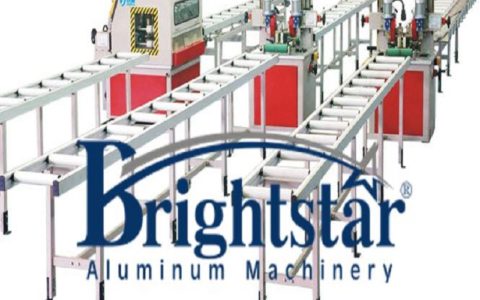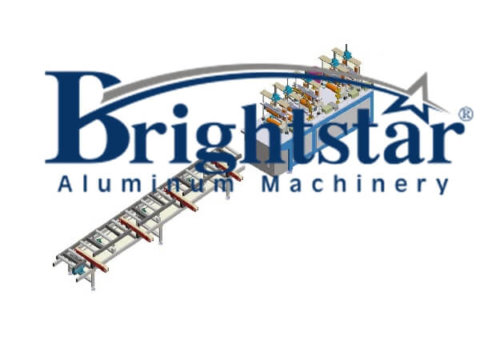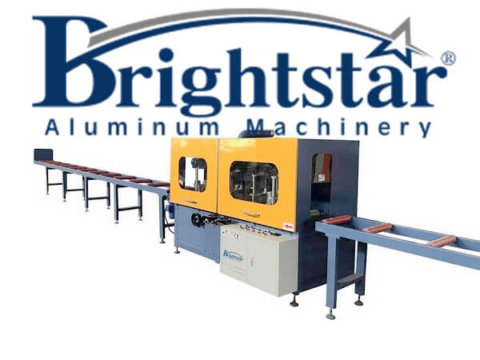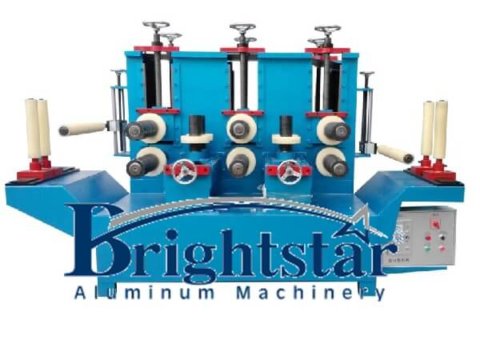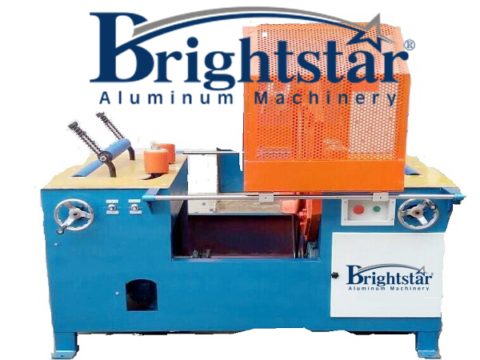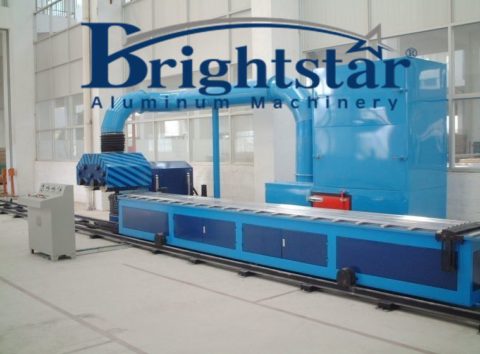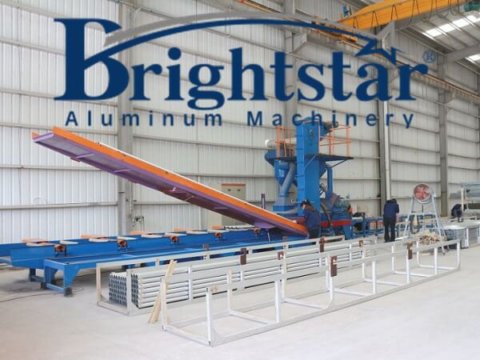
Thermal break aluminum profile assembling machine
Thermal break aluminum profile assembling machine
Thermal break aluminum profile assembling machine
Thermal break aluminum profile assembling machine
The Thermal Break Aluminum Profile Assembling Machine plays a crucial role in creating energy-efficient building materials.
It specializes in assembling thermal break aluminum profiles, which are composite profiles featuring a non-conductive material like polyamide sandwiched between two aluminum sections.
This innovative design significantly reduces heat transfer through windows, doors, and curtain walls, contributing to improved building energy efficiency.
The thermal break aluminum profile assembling machine is used for producing thermal break aluminum profiles.
It includes three sets of machines: one set of knurling machine, one set of strip feeder, and one set of rolling forming machine.
Two pieces of aluminum profiles are connected by polyamide strips.
Aluminum can transfer heat or cold very easily, and its thermal conductivity is high.
But polyamide strip’s thermal conductivity is very low, then can block the heat of cold transfer through aluminum.
Thermal break aluminum profile assembling machine details
Knurling machine
The first step is using the knurling machine with a strip feeder to knurl the notch of aluminum extrusion profile, making teeth and feeding strip in one aluminum profile.
The knurling step is very important, providing mechanical surface conditions of aluminum extrusions and enhancing shear strength and making thermal barrier aluminum profiles stable and permanent.
Strip feeder
The main task is putting a thermal barrier strip in the notch of aluminum profiles.
Rolling forming machine
Rolling forming machine makes the aluminum profiles with thermal barrier rolled, having the compound function.
The rolling is the key factor in whether the products are up to standard, setting the high-pressure alarm and low-pressure alarm
Testing machine
It is used for testing the strength. The testing machine is digital.
Thermal break aluminum profile assembling machine technical data and price
Voltage: 380V or 415V, can be made according to the project.
Total power: 4.9KW
Weight: 2600kg
Section can be processed: width(300mm)× height(260mm)
Auxiliary frame: width(500mm) ×length(5500mm)
Floor area: length(15000mm)×width(4000mm)
Day output: 5~10 tons per 8 hours
Key Features:
Precise strip insertion: Ensures optimal thermal performance and prevents air leaks.
Adjustable pressure and rolling settings: Adapts to different profile thicknesses and materials.
High production capacity: Streamlines the assembly process for efficient production.
Durable construction: Built to withstand the wear and tear of heavy-duty operation.
Safety features: Protects operators from potential hazards during the assembly process.
Advantages:
Improved energy efficiency: Thermal break profiles significantly reduce heat transfer, leading to lower energy bills and a smaller carbon footprint for buildings.
Enhanced thermal comfort: Buildings with thermal break profiles maintain a more consistent and comfortable temperature throughout the year.
Reduced noise pollution: The polyamide strip also acts as a sound barrier, improving acoustic insulation in buildings.
Increased structural integrity: The rolling and pressing process strengthens the bond between the profiles, enhancing their overall stability.
Cost-effectiveness: Thermal break profiles offer long-term savings in energy bills and can contribute to increased building value.
Applications:
Windows and doors: Thermal break profiles are essential for energy-efficient windows and doors, especially in cold climates.
Curtain walls and facades: Building exteriors with thermal break profiles contribute to improved energy performance and occupant comfort.
Skylights and rooflights: Thermal break profiles can minimize heat gain in skylights and rooflights, reducing cooling costs.
Interior partitions: For buildings requiring controlled temperature zones, thermal break profiles can improve thermal separation between spaces.
Thermal break aluminium profile assembling machine
High efficiency, energy-saving and lower power consumption, high production output
Teeth forming and strip feeding can be done in one set of machine.
The whole equipment can make two groups aluminum extrusion profile combined by 2 sets of teeth forming machines.
Special design for roller of the rolling forming machine can ensure the stable combination of 2 pieces of aluminum profiles.
Adopting the most precise sensor, the test accurately
Using the reliable quality motor, frequency converter and reducer, etc standard components
Flexible and adjustable auxiliary frame, digital display
The stable quality, reliable performance, and simple operation, it is an ideal equipment for heat insulation aluminum profiles.
Thermal break aluminum profile assembling machine, your smart choice for thermal break aluminum profile and heat insulation aluminum profile production line.
Overall, the Thermal Break Aluminum Profile Assembling Machine plays a vital role in promoting energy-efficient building practices.
Its ability to create high-performance building materials, enhance thermal comfort, reduce noise pollution, and contribute to sustainability makes it a valuable asset for manufacturers, architects, and anyone seeking to create environmentally conscious and energy-efficient structures.
What are the advantages of thermal break aluminum profiles in building industry
Thermal break aluminum profiles offer several significant advantages in the building industry, making them a popular choice for windows, doors, curtain walls, and other building elements.
Here are some key benefits:
Enhanced Energy Efficiency:
Reduced heat transfer: The non-conductive polyamide strip sandwiched between the aluminum sections significantly reduces heat loss in winter and heat gain in summer. This leads to lower energy consumption for heating and cooling, resulting in cost savings and a reduced carbon footprint.
Improved thermal comfort: Buildings with thermal break profiles maintain a more consistent and comfortable temperature year-round, minimizing drafts and hot spots. This enhances occupant well-being and increases productivity in workplaces.
Durability and Performance:
Superior weather resistance: Thermal break profiles are highly resistant to corrosion, moisture, and temperature extremes, ensuring long-lasting performance and minimal maintenance.
Dimensional stability: The combination of aluminum and polyamide provides excellent dimensional stability, preventing warping and sagging even in large-scale applications.
Enhanced sound insulation: The polyamide strip acts as a sound barrier, dampening noise transmission from outside and creating a quieter environment within the building.
Aesthetics and Design Flexibility:
Sleek and modern appearance: Thermal break profiles offer a clean and contemporary aesthetic that blends seamlessly with various architectural styles.
Wide range of colors and finishes: Aluminum profiles can be powder coated or anodized in a variety of colors and finishes to match specific design requirements.
Versatility in design: Thermal break profiles can be customized to accommodate different shapes, sizes, and configurations, offering greater design flexibility for architects and builders.
Additional Advantages:
Lightweight construction: Compared to traditional steel profiles, thermal break aluminum profiles are lighter, reducing the overall weight of the building and potentially simplifying installation.
Fire resistance: Many thermal break profiles have fire-resistant properties, contributing to improved building safety and meeting fire code requirements.
Ease of installation: Some models of thermal break profiles feature innovative designs that simplify installation and reduce labor costs.
Overall, the advantages of thermal break aluminum profiles in the building industry are numerous and compelling.
Their superior energy efficiency, durability, performance, aesthetic appeal, and design flexibility make them a valuable choice for architects, builders, and homeowners seeking to create sustainable, comfortable, and visually appealing buildings.
